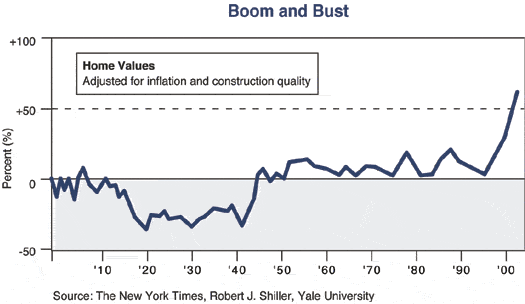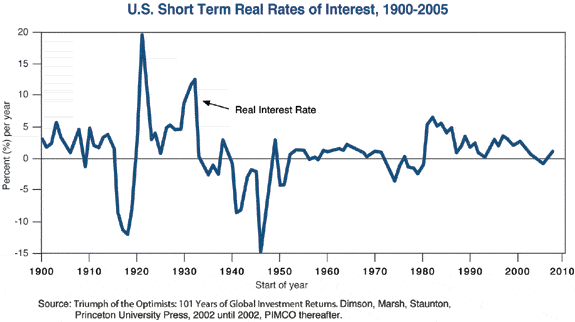This is the way the world ends
Not with a bang but a whimper
It all started with a big bang they say, and will end with a subzero Celsius whimper. But between that beginning and its finale lie some fifty billion years and an infinitude of question marks. How Mr. Eliot came to his cosmological forecast, I am not quite sure, but literary authors it seems have often been more on the mark than their physicist contemporaries when expounding on the make-up of the universe. Edgar Allan Poe, for instance, solved several riddles about the apparent emptiness of space long before Einstein penciled in his E=MC2 .
Yours truly, however, falling into at least the frustrated author category, never had much of a chance at rivaling Poe or T.S. My high school education in physics began and ended it seems, with the Newtonian principle involving action and reaction; so that when I much later in life read of the Einsteinian world of relativity and space-time, I was forced to reread paragraphs over and over again like a first grader struggling with “see Spot run” in his Dick and Jane primer. My fascination (sans aptitude) with the cosmos continues, however, and the question of how it all began (if indeed there was a beginning) and how it all will end is one of humanity’s biggest question marks, to say nothing of the “why” and the role we as human beings play in this near infinite play. For those with similar interest desirous of a highly understandable explanation of the Big Bang theory and how modern day physicists believe it all unfolded, I would heartily recommend Big Bang by Simon Singh. For those of you who simply can’t wait to find out, follow this layman’s summary written strictly off the top without reference or fact checking.
The universe began as a singularity some 13.7 billion years ago, a view by the way, which the Catholic Church has endorsed in principle, while not specifically opining on the facts. A “singularity” means that all of the existing universe was at one time condensed into the space of a pencil point and then “bang!” (actually there was no noise since a pure vacuum can’t transmit sound waves), within the span of a second all of the known matter of today’s universe was rushing outward in the form of electromagnetic waves. Some 300 thousand years later, these waves began to condense into the hydrogen and helium that constitute 86 percent of our existing universe. Stars were formed from these elements and they, in turn, produced the heavier atoms of which we are made. We are in fact, stardust, if not golden.
Now fast-forward from 2005 some thirty billion years or so. You and your loved ones may be in heaven, but you had better hope that heaven is in an entirely different place because this universe will be awfully cold and essentially dead. Since it appears that “space” and, therefore, the stars are expanding outward as opposed to existing in a steady state or even contracting inward due to the force of its own gravity, the universe will become colder and colder. This says nothing about Earth and our own sun. We will have long since been fried by old Sol’s death throes and then frozen as it exhausts its fuel. The whole universe though will die as its billions of galaxies and their billions of stars compress into black holes or worthless expanses of space ash. If there had been life anywhere else, it won’t be around then. The world ends with a whimper after beginning with a bang. T.S. Eliot wins his bet.
Ah, but wait, there may be more! Optimists take heart! Due to the theory of quantum mechanics which explains the world of tiny particles (smaller than atoms) as opposed to things we can see and touch, there may in fact be a multitude of universes “out there.” The problem is, we just can’t see them. With string theory, M theory, and now who knows what theory to come, it’s at least possible for “humanity” to escape through a “wormhole” into an entirely different universe which might be like the one we live in today. And that says nothing about “God” and “His” ability to create another one if “He” so chooses. Yeah, yeah, I know this Outlook is going way too far, but I wanted to at least leave you on an upbeat. Life is hard enough without having some astronomer “wannabe” writing about the end of the world as we know it. Far better to stick to the bond market, I suppose, where you can at least clip a few coupons and collect a little interest amidst all the doom and gloom. Still, isn’t it exciting to think about how the world began and what lies in the future? I wish we could all stick around to see how it plays out. Wormholes, anyone?
Remember Dow 5000? I sure do and if I should ever forget, there is always someone nearby to remind me of that “singularity” when I temporarily lost my mind. It only lasted for a split second, although my current investment universe is still in the process of cooling, condensing, and spewing forth lots of additional hot gas. I dare bring this topic back up because like a true scientist, I have examined the evidence and have come up with a theory that explains Dow 5000 in the negative—why we haven’t gone there. My mistake, I am convinced, lies in underestimating the depths to which real interest rates would fall. Back in 2002, although the Fed was in the process of dropping short rates like a rock, there was nary a hint from Greenspan or the PIMCO war room that nominal short rates would sink to one percent, and that real yields would go subzero, resembling the depths of outer space. They did, and they have barely climbed back up to zero percent real. The real yield decline, of course, expanded profit margins especially for finance-based companies, and led to equally unimagined levels of cash flow which increased corporate “margins of safety” rendering Dow 5000 not only unnecessary as a level of “value,” but out of date in what would prove to be an entirely new world of lower real interest rates. Stocks had found their wormhole and managed to survive the great freeze.
There are two parts to the above “mea culpa,” however, and the future for stocks and other asset categories depends more heavily on one of them than the other. Granted, lower yields exploded profits and cash flow like the first seconds of existence nearly fourteen billion years ago. But, if my mistake had simply been in underestimating forward earnings, it would have little bearing on the future since, if they can go up, they can go down, and no one is gonna be perfect in the timing or magnitude of future earnings waves. The real key to avoiding Dow 5000, however, and in fact the reason we now reside above Dow 10,000, is that real interest rates came down and are expected to stay down.
Our own Paul McCulley, even before he rejoined PIMCO in 1999, made the amazingly simplistic but powerful distinction between disinflation’s journey and its destination. The journey, he suggested, had phenomenal strength much like that of the universe’s “electromagnetic” force. As inflation sunk to near zero (and real interest rates with it) the price investors would be willing to pay for future income should expand, since it would be “discounted” at lower and lower real rates. “Stock P/Es and bond prices, therefore, should go up,” he said and, of course, they did. Once they reached their destination, however, the power would weaken as the multiple expansion based on the journey would reach its finale. Once disinflation or its real interest rate companion reached its “ destination,” much like a spaceship approaching the speed of light, the investment world would begin to change. No longer would the stock market’s form take the shape of this sleek, lengthy cone-shaped vehicle able to generate double digit returns. But instead, its “mass” and future returns would compress into something resembling current real interest rates and expected future inflation, a number that today is close to five percent. Elegant. Like Einstein and other scientists have known for centuries, the simplest equation explaining a phenomena is often the best.

I was reminded of this journey/destination of real interest rates and its power on asset prices when viewing a chart of real housing price appreciation over the past 100 years published in the New York Times . That Chart I, shown above, tells us that for certain lengthy periods, real housing prices (ex-inflation) can go up, and during others they can go down.
The explanation, however, that the chart does not show, is that these periods of real appreciation and real depreciation are significantly coincidental (in my opinion—correlated) with periods of low and then high real interest rates. The periods when housing has gone up the most in real terms (1940-1952, and 1998-2005) have coincided with periods when real short rates were at their lowest or, better yet, on their “journey” to extremely low levels as shown in Chart II.

The same discounting mechanism that helped to avoid Dow 5000 and led to Dow 10,000+ has been the primary thrust behind today’s double-digit gains in home prices. The layman would not disagree. If you are able to borrow money at essentially no cost, ex-inflation, then home prices should go higher. “How high?” is the question and this is where the “journey” and the “destination” rubber meets the valuation road for not just housing, but for stocks, bonds, and other The fact is that this real interest rate journey to its current destination has pumped up all asset prices because they are all being discounted by an extremely low real interest rate. The current level has produced double-digit annual rates of appreciation for different asset classes at varying cycles—stocks and bonds first—commodities, collectibles and housing with a lag. The important point and critical element in a future forecast, however, is to recognize that real yields, whether they be short-term or further out the curve, bottomed in 2003 and have been moving higher ever since. Not only has the downward journey ended, but a mini up-cycle appears to be underway which ultimately reduces bond prices, stock P/Es and casts a negative pall on other asset classes .
Now I am not about to forecast another black hole for stocks or any other asset class. No masochist here! But, my point is that since the lower and lower real interest rate spiral is basically over, the multiple expansions in stocks, housing, commodities, collectibles and bonds are over as well. Housing prices may go up in the future, but only to the extent that they mirror inflationary and perhaps mild demographic pressures. Stock prices may go up in the future, but only to the extent of real earnings growth (1-2 percent) and inflationary pass-throughs, assuming today’s market valuations are correct. Commodities, art, jewelry, stamps—ditto, ditto, ditto, and ditto. And when exuberant holders of these assets finally realize that all of their “investments” have a common denominator of value that has experienced its big bang, but will in future years cool and condense in a new investment return atmosphere, well then, we shall see how this world ends. Since the PIMCO forecast is for real yields to stay low, absent a policy mistake by the Fed, we may well whimper along rather slowly as all asset classes compress to provide 2-3 percent real and 5+ percent nominal returns over long periods of time. We remain mindful, however, of not only potential central bank errors of judgment, but of oil, currency and geo William H. Gross
Managing Director
